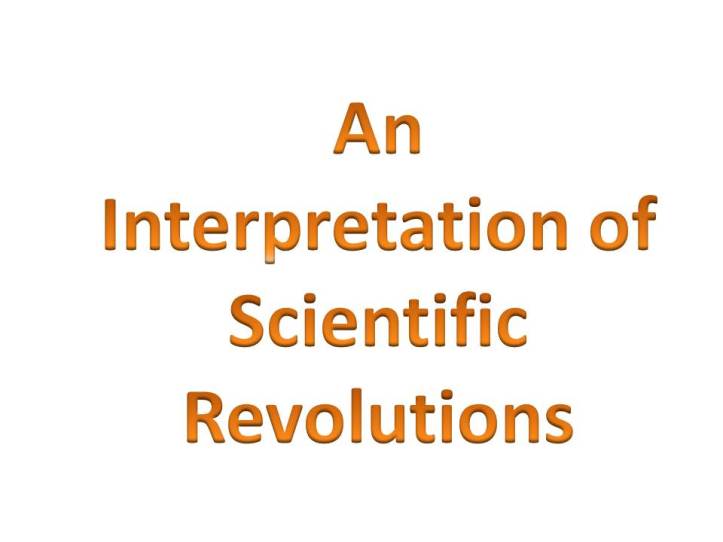The following is an attempt to interpret Thomas Kuhn’s ‘The Structure of Scientific Revolutions’ using the framework of a discipline which is eclectic, pragmatic and empirical in approach. The starting point of this interpretation is a review of ‘The Structure of Scientific Revolutions’ which the interested reader will find via the link in the Appendix. This third part is a response to Chapter 2 of Thomas Kuhn’s ‘The Structure of Scientific Revolutions’. Kuhn named this chapter ‘The Route to Normal Science’ and here he expands on his concept of ‘normal science’ which he carefully contrasts with revolutionary science.
Central to the discussion are the characteristics of the research community. In moving from normal science to revolutionary science and back to normal science again several things happen within the research community. Firstly the research community has a shared and specialised language and central problems to solve. In moving to revolutionary science there is a splintering of the research community as the new paradigm arises. The research community is increasingly attracted to the new paradigm. Eventually the new paradigm succeeds and the process of normal science begins within this new paradigm. The research community initially uses a generalised language before developing a more specialised one which is relatively inaccessible to those outside of the community.
This transition describes a process within the research community itself. Whenever communities contain are linked not just through research but through the practical application of that research then strictly speaking these additional common properties of the community are not included within Kuhn’s arguments and he makes explicit reference to such cases. In the case of eclectic communities which are identified more by practical research applications than research activities, the transition from normal science to revolutionary science to normal science again occurs within the related and distinct research communities. The eclectic community may influence the transition depending on their relationship with the research communities. Such a relationship may involve direct dialogue, indirect communication or the use of shared resources.
The eclectic community may also through involvement with many research communities facilitate revolutionary science. However if the eclectic community does not have the necessary infrastructure then any facilitation of a revolutionary paradigm shift may necessary be followed by the research community taking forward the normal science. If such is the case, it implies that revolutionary science involves more than one community and is differentiated from the single community driven process of normal science.
Appendix
A Review of the Structure of Scientific Revolutions
An Interpretation of Scientific Revolutions – Part 1
An Interpretation of Scientific Revolutions – Part 2
Index: There are indices for the TAWOP site here and here Twitter: You can follow ‘The Amazing World of Psychiatry’ Twitter by clicking on this link. Podcast: You can listen to this post on Odiogo by clicking on this link (there may be a small delay between publishing of the blog article and the availability of the podcast). It is available for a limited period. TAWOP Channel: You can follow the TAWOP Channel on YouTube by clicking on this link. Responses: If you have any comments, you can leave them below or alternatively e-mail justinmarley17@yahoo.co.uk. Disclaimer: The comments made here represent the opinions of the author and do not represent the profession or any body/organisation. The comments made here are not meant as a source of medical advice and those seeking medical advice are advised to consult with their own doctor. The author is not responsible for the contents of any external sites that are linked to in this blog.

[…] An Interpretation of Scientific Revolutions – Part 3 […]
LikeLike
[…] An Interpretation of Scientific Revolutions – Part 3 […]
LikeLike
[…] An Interpretation of Scientific Revolutions – Part 3 […]
LikeLike
[…] An Interpretation of Scientific Revolutions – Part 3 […]
LikeLike
[…] An Interpretation of Scientific Revolutions – Part 3 […]
LikeLike
[…] An Interpretation of Scientific Revolutions – Part 3 […]
LikeLike
[…] An Interpretation of Scientific Revolutions – Part 3 […]
LikeLike
[…] An Interpretation of Scientific Revolutions – Part 3 […]
LikeLike
[…] An Interpretation of Scientific Revolutions – Part 3 […]
LikeLike
[…] An Interpretation of Scientific Revolutions – Part 3 […]
LikeLike
[…] An Interpretation of Scientific Revolutions – Part 3 […]
LikeLike
[…] An Interpretation of Scientific Revolutions – Part 3 […]
LikeLike
[…] An Interpretation of Scientific Revolutions – Part 3 […]
LikeLike
[…] An Interpretation of Scientific Revolutions – Part 3 […]
LikeLike
[…] An Interpretation of Scientific Revolutions – Part 3 […]
LikeLike
[…] An Interpretation of Scientific Revolutions – Part 3 […]
LikeLike
[…] An Interpretation of Scientific Revolutions – Part 3 […]
LikeLike
[…] An Interpretation of Scientific Revolutions – Part 3 […]
LikeLike
[…] An Interpretation of Scientific Revolutions – Part 3 […]
LikeLike
[…] An Interpretation of Scientific Revolutions – Part 3 […]
LikeLike